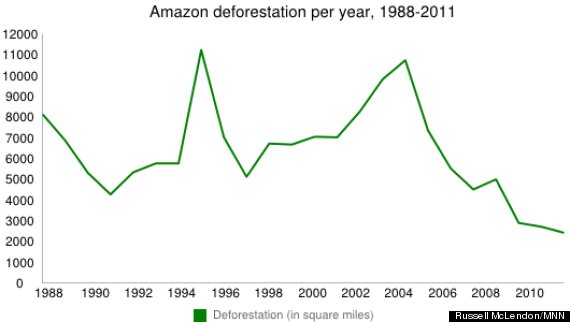Over recent years, deforestation rates in the
Amazon Rainforest have been going through troubling periods of increase and and occasional periods of decrease. These trends have been influenced by governmental policies, interests of corporations/loggers, illegal deforestation, work done by conservation biologists, and climate change. From an economic standpoint there is a lot to gain by engaging in deforestation, such as timber to sell and using cleared lands for farming.
 |
| Some beautiful scenery from the Amazon River Basin (Leader 2012) |
However, unregulated logging and destruction of the Amazonian ecosystem has had profound negative consequences, some of which include contributing to global warming and loss of habitat for many species (
Yadvinder 2008). There is still a lot of work to be done. Unfortunately, just in the last year, deforestation in the Amazon Rainforest increased by 28% after following a period of relatively decline in deforestation(
Malingreau 2012). Here we will discuss the
deforestation history in the Amazon,
ongoing efforts in conservation management and
impacts of climate change.
Below is a graphical representation of deforestation rates in the Amazon in recent years prior to the increasing rate of levels over the past year (
Leader 2012).
 |
| Y-axis measured in square miles of deforestation, X-axis is the year. |
Unfortunately, there was an increase in 2013 from the previous year (
Malingreau 2012) , and the following figure depicts the extent of this deforestation (
Carrington 2013). Even though the level of deforestation (5,843 square kilometers) is much less than levels in 2006-2008, we need to remain vigilant and avoid an increasing trend of deforestation in the near future.


